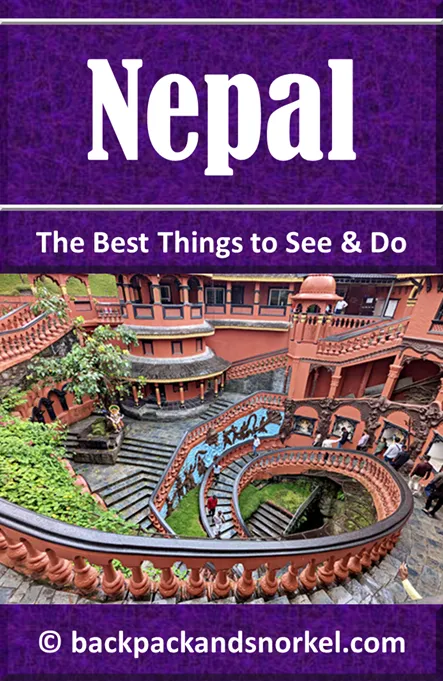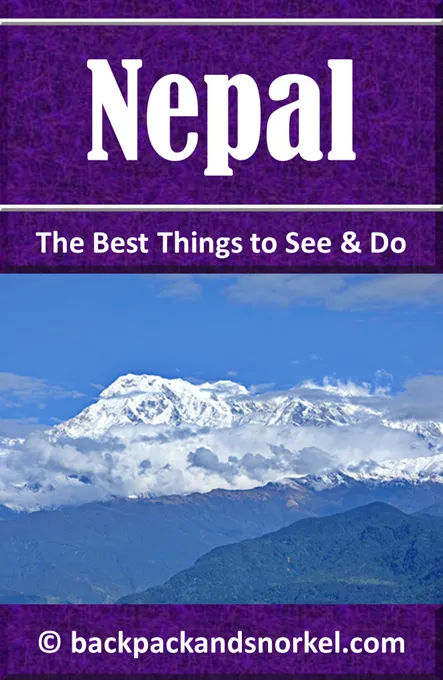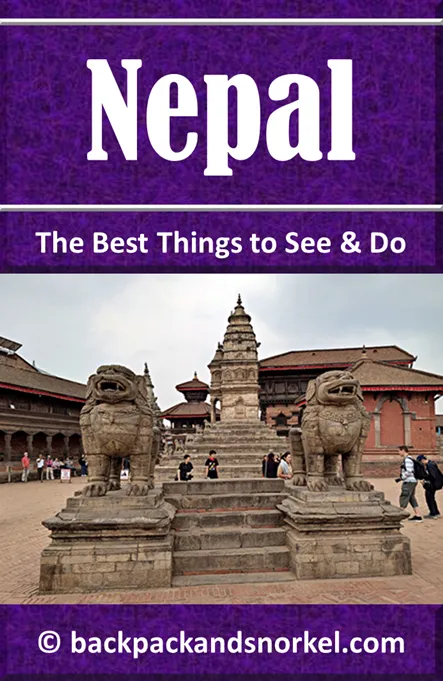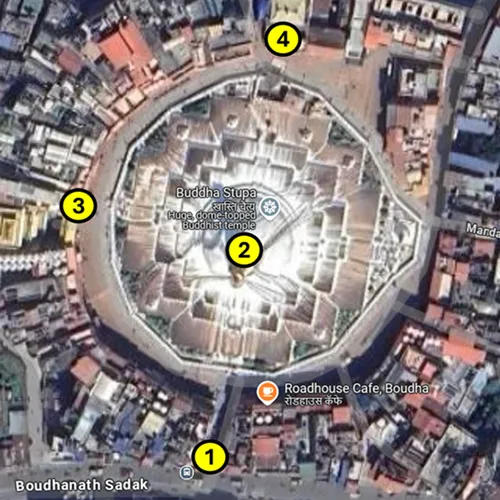Visiting Boudhanath Stupa: Your Guide to Kathmandu's Must-See Buddhist Landmark - Nepal Purple Travel Guide
(map, reviews)
This is Premium Content! To access it, please download our
Backpack and Snorkel Purple Travel GuideTowering above the rooftops of northeastern Kathmandu, the magnificent Boudhanath Stupa (also spelled Boudha Stupa) is one of the largest spherical stupas in the world, and one of the most sacred Tibetan Buddhist sites outside Tibet. With its massive white dome, iconic all-seeing eyes of the Buddha, and a constant whirl of prayer flags and pilgrims, Boudhanath offers a serene yet vibrant atmosphere that draws both spiritual seekers and curious travelers.
Boudhanath Stupa lies a bit over 4 miles (7 km) northeast of central Kathmandu - take a taxi or Pathao from your hotel to get there.
At the time of writing, admission was Rs400 per non-Nepali visitor, payable in cash. Interestingly, when you enter from the south, you have to pay admission at the booth. The entrances in the North are not always guarded, so there is a chance that you can enter the area for free if you go there.
The main attractions of the Boudhanath Stupa area are:
Other things to see on site are:
Rooftop Views: Nearby cafés offer stunning rooftop views of the stupa, which can be especially beautiful at sunrise or sunset.
Stores: Around the stupa. there are many stores that sell religious artefacts and souvenirs. We found the ‘singing bowls’ really interesting. If you plan to buy anything, make sure to compare prices and haggle.
Here at Backpack and Snorkel Travel Guides, we typically promote self-guided walking tours.
But we realize that not everybody likes to walk by themselves in a foreign city. So, just in case that you rather go with ab guide: NO PROBLEM! Please see the Viator tours below.
free GuruWalk tours
paid Viator tours
Southern Entrance Gate
(map)
This is Premium Content! To access it, please download our
Backpack and Snorkel Purple Travel GuideAt the time of writing, admission was Rs400 per non-Nepali visitor, payable in cash. Interestingly, when you enter from the main gate in the south, you have to pay admission at the booth. The entrances in the North are not always guarded, and there is a good chance that you can enter the area from there.
The gate is beautifully decorated.
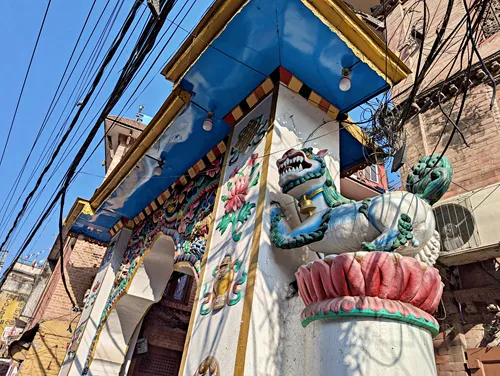

Boudhanath Stupa
(map, reviews)
This is Premium Content! To access it, please download our
Backpack and Snorkel Purple Travel GuideThe name Boudhanath combines ‘Boudha’, meaning Buddha, and ‘nath’, meaning lord or guardian in Sanskrit. Together, it translates roughly to ‘Lord of Wisdom’ or ‘The Lord Buddha’. Locals often refer to it simply as ‘Boudha’.
Legend holds that the stupa was originally built during the Licchavi period, possibly in the 5th century CE, by a devout widow who asked the king for land to build a shrine to the Buddha. The site has since grown into one of the most important centers of Tibetan Buddhism in Nepal, especially after the influx of Tibetan refugees in the 1950s.
Detailed information can be found at our Boudhanath Stupa Page

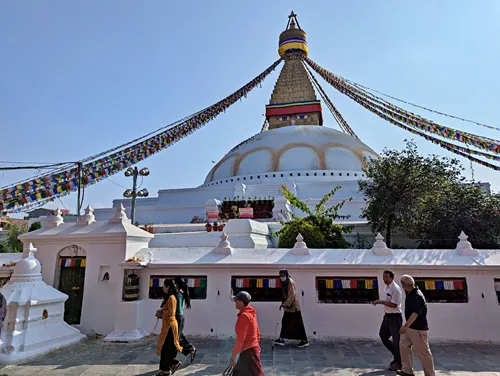
Jamchen Lhakhang Monastery
(map, reviews)
This is Premium Content! To access it, please download our
Backpack and Snorkel Purple Travel GuideThe name Jamchen Lhakhang comes from Tibetan:
‘Jamchen’ means Great Compassion, often associated with Jampelyang (Manjushri), the bodhisattva of wisdom.
‘Lhakhang’ means temple or monastery.
Together, the name reflects the monastery’s dedication to preserving Tibetan Buddhist teachings, especially those emphasizing compassion and wisdom.
Detailed information can be found at our Jamchen Lhakhang Monastery Page

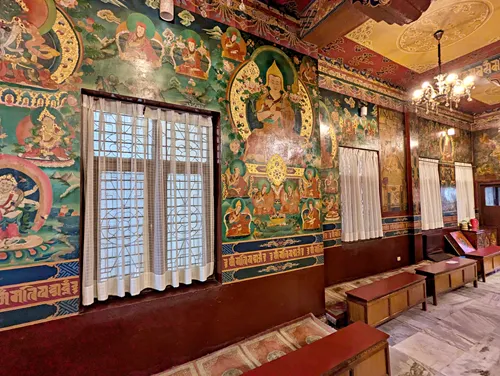
Guru Lhakhang Monastery
(map, reviews)
This is Premium Content! To access it, please download our
Backpack and Snorkel Purple Travel Guide‘Lhakhang’ in Tibetan means ‘God House’ or ‘Temple’.
‘Lha’ = deity or god
‘Khang’ = house or building
So, Lhakhang translates to ‘the dwelling place of a deity’, which is why it is commonly used to refer to Buddhist temples or shrines in Tibetan-speaking regions like Tibet, Bhutan, and Himalayan areas of Nepal.
‘Guru Lhakhang’ translates to ‘Temple of the Guru’, a name that honors Guru Rinpoche (Padmasambhava), the 8th-century tantric master credited with bringing Buddhism to Tibet. Inside the monastery, visitors can find statues, thangkas, and murals depicting Guru Rinpoche in various forms, signifying his vital role in the Vajrayana tradition.
Detailed information can be found at our Guru Lhakhang Monastery Page


Back to your Day 3 in Nepal itinerary
Where do you want to go now?
Author: Rudy at Backpack and Snorkel
Bio: Owner of Backpack and Snorkel Travel Guides. We create in-depth guides to help you plan unforgettable vacations around the world.
Other popular Purple Travel Guides you may be interested in:
Like this Backpack and Snorkel Purple Travel Guide? Pin these for later:

